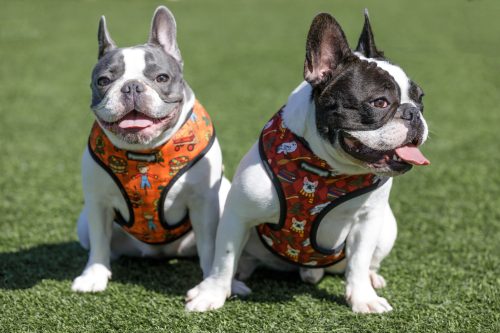As a dog owner in Columbus, Ohio, ensuring the safety and comfort of your furry friend during walks and outdoor activities is a top priority. One essential tool for achieving this is a dog harness. Harnesses offer a secure and gentle way to control your dog while reducing strain on their neck and throat. Whether you’re exploring the Scioto Mile, strolling through the Short North, or just heading out for a casual dog walk in Columbus, having the right harness will make all the difference.
Here’s a guide to the different types of dog harnesses, how to choose the right one, and how to properly fit them onto your dog:
Back-Clip Harness
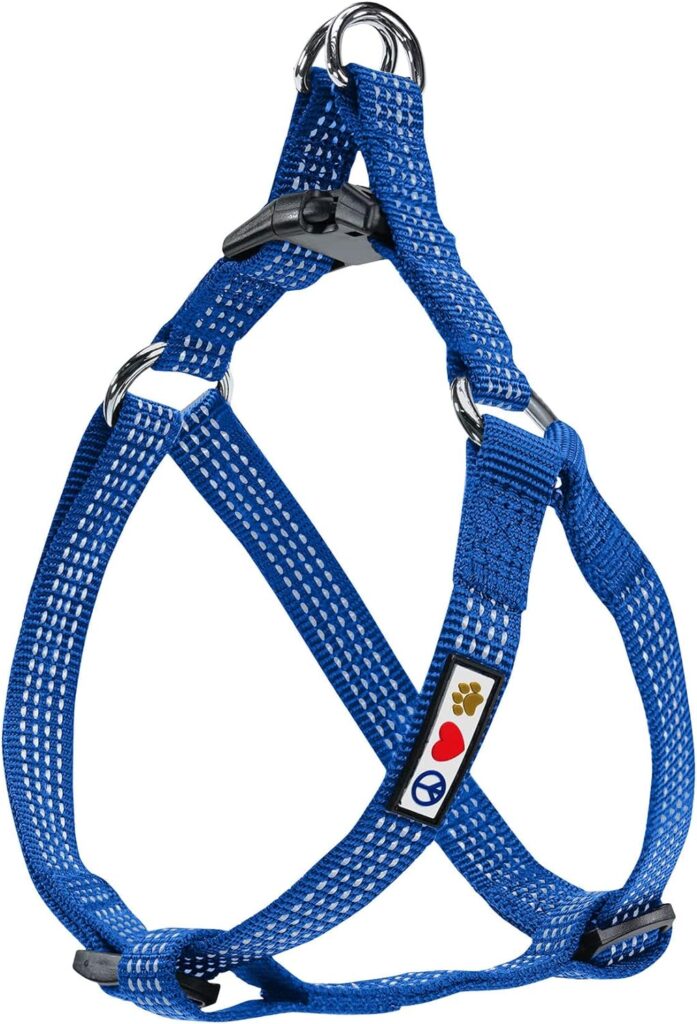
A back-clip harness features a D-ring on the back where the leash attaches. This is the most common type of harness and is ideal for well-behaved dogs who do not pull on the leash.
How to Put It On:
- Slide the harness over your dog’s head.
- Adjust the chest strap so it fits snugly around the dog’s torso.
- Buckle the harness and attach the leash to the D-ring on the back.
Pros:
- Easy to use
- Comfortable for dogs
- Ideal for small and medium-sized dogs
Cons:
- Not effective for dogs that pull
Front-Clip Harness
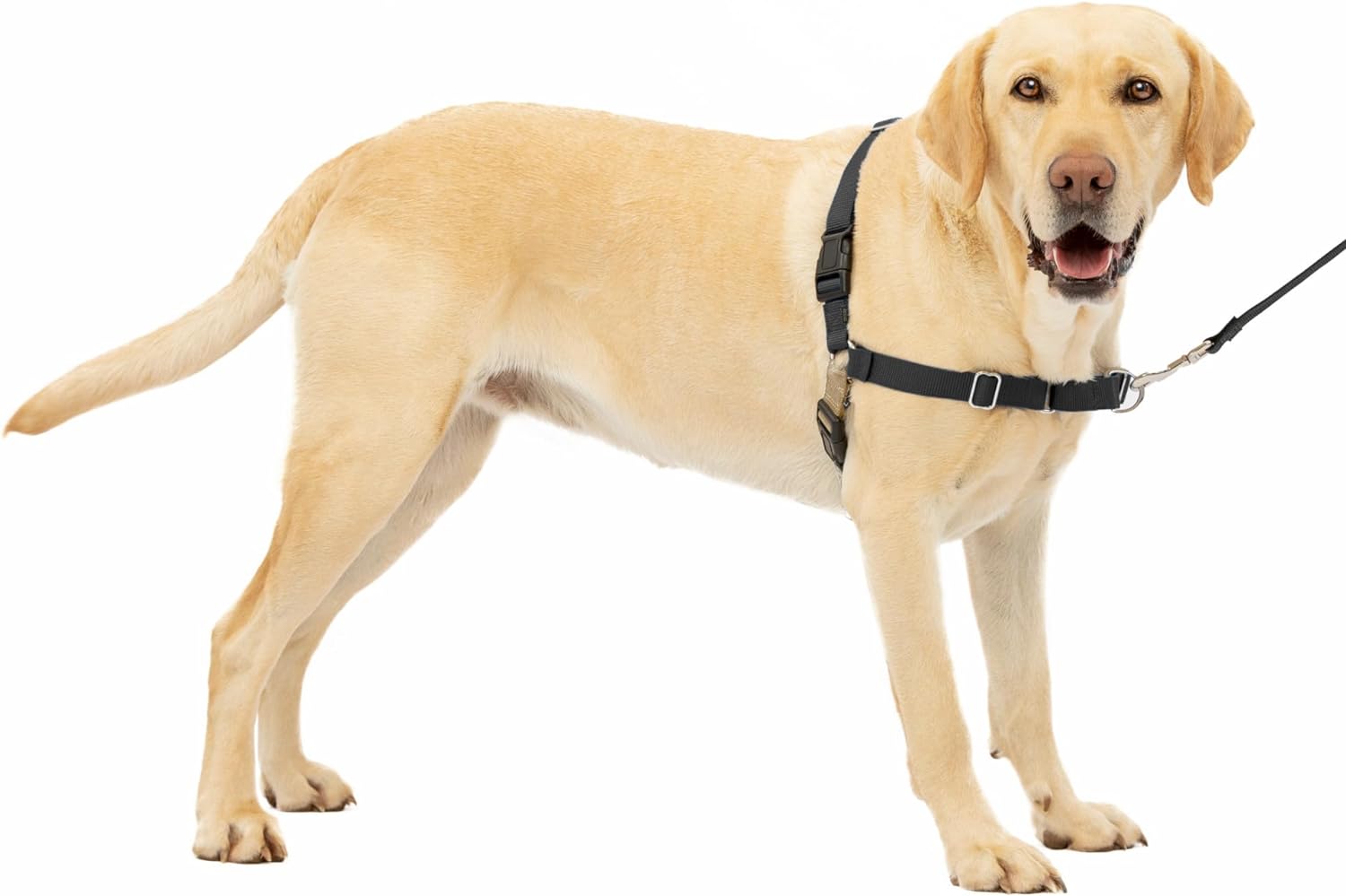
The front-clip harness has a D-ring on the chest. It is designed to discourage pulling by turning the dog towards the owner when they try to pull ahead.
How to Put It On (see video):
- Slide the harness over your dog’s head.
- Adjust the chest strap so it fits snugly around the dog’s torso.
- Buckle the harness and attach the leash to the D-ring on the chest.
Pros:
- Effective for reducing pulling
- Provides better control
Cons:
- Can cause the leash to get tangled under the dog’s legs
- Not suitable for off-leash activities
Dual-Clip Harness
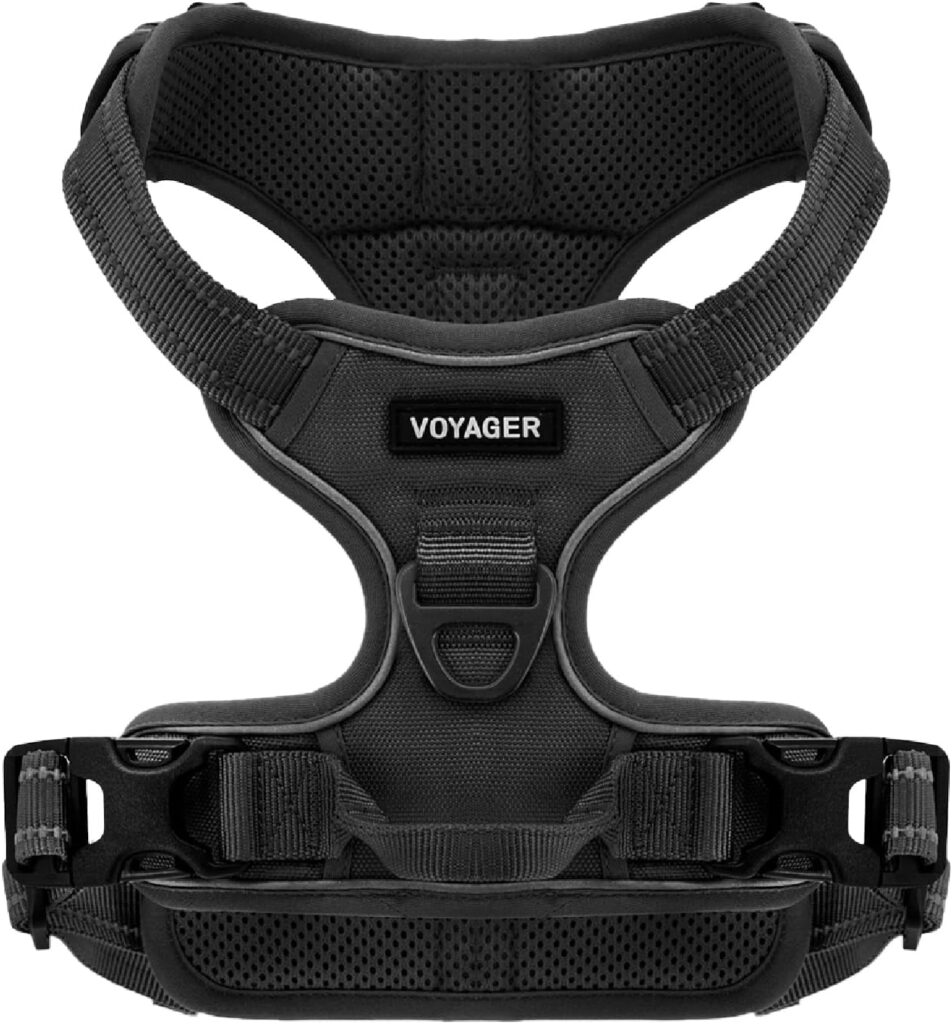
A dual-clip harness offers both front and back attachment points. This versatile option allows you to switch between front and back clips depending on your dog’s behavior and the situation.
How to Put It On (see video):
- Slide the harness over your dog’s head.
- Adjust the straps around the chest and torso.
- Buckle the harness and attach the leash to the desired clip (front or back).
Pros:
- Versatile
- Great for training and everyday use
Cons:
- Can be more expensive
Step-In Harness
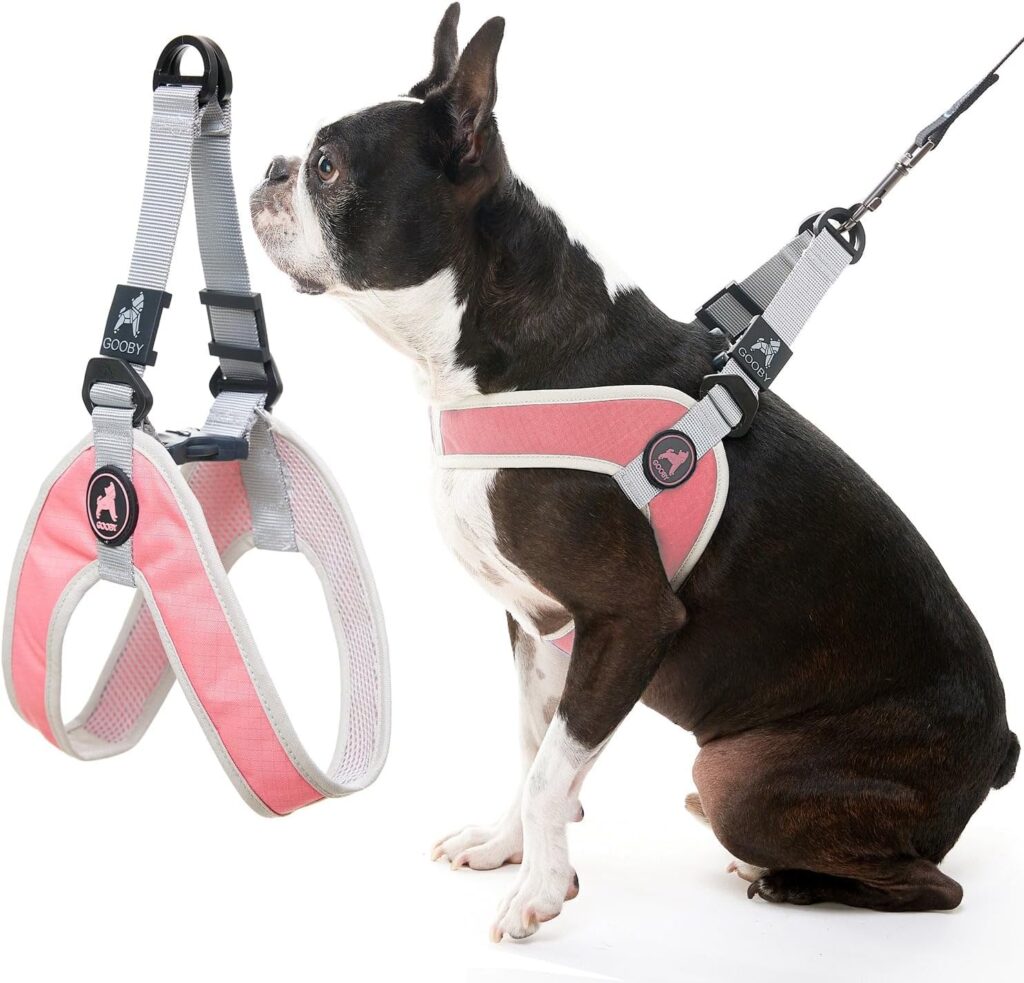
A step-in harness is designed for dogs to step into it with their front paws, after which the harness is pulled up and secured. This style is great for dogs who dislike having harnesses put over their heads.
How to Put It On (see video):
- Lay the harness flat on the ground, unbuckled.
- Have your dog step into the harness with both front paws.
- Pull the harness up around the dog’s chest.
- Buckle it on the back and adjust the straps for a secure fit.
Pros:
- Easy to put on
- Comfortable
Cons:
- Can be tricky for very small or large dogs
Vest Harness
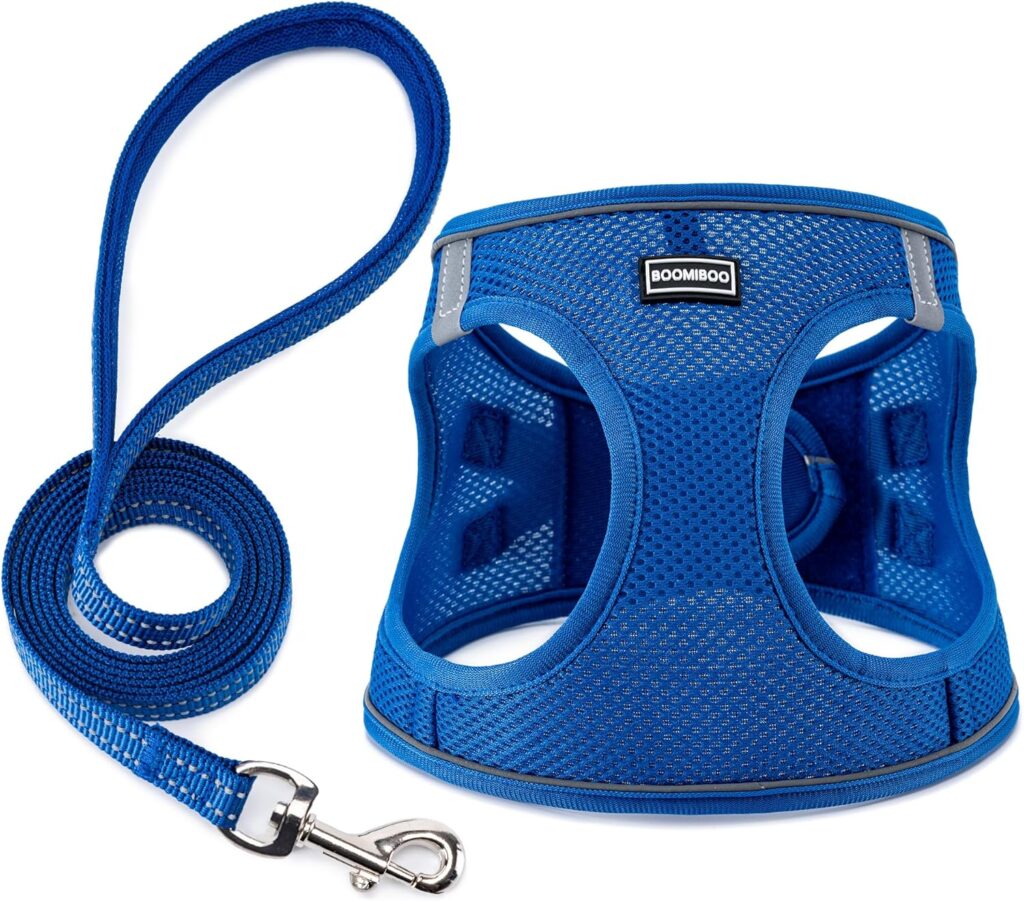
Vest harnesses cover more of the dog’s body and are often padded for extra comfort. They are typically used for smaller dogs and provide a snug fit that can be more secure.
How to Put It On (see video):
- Slide the vest over your dog’s head.
- Place each of your dog’s front legs through the designated leg holes.
- Secure the Velcro or buckle on the back.
- Adjust the straps for a snug fit and attach the leash to the D-ring on the back.
Pros:
- Comfortable and secure
- Often includes additional features like pockets or reflective material
Cons:
- Can be too warm in hot weather
- May be restrictive for larger dogs
No-Pull Harness
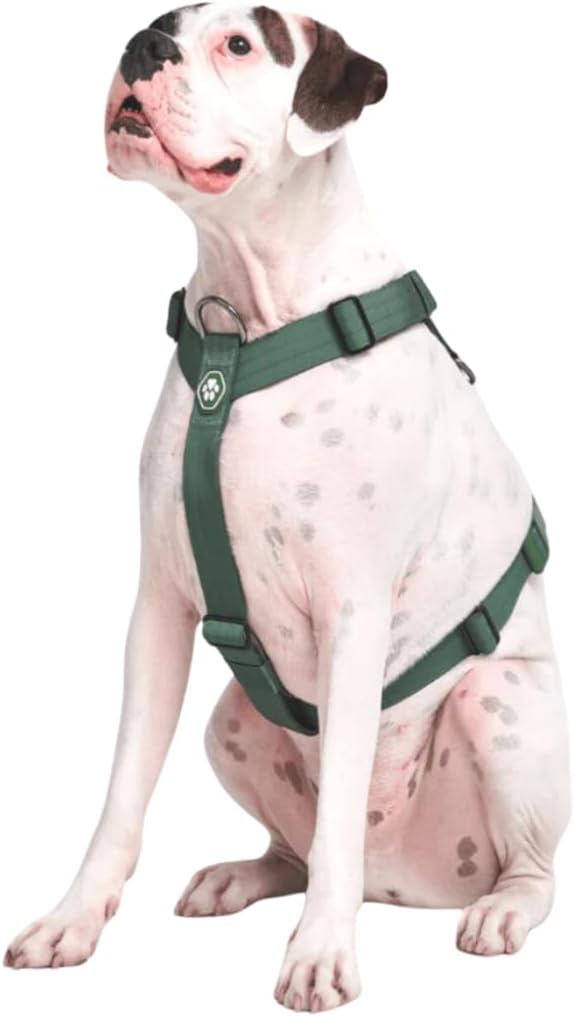
Designed specifically to reduce pulling, no-pull harnesses often have a front-clip attachment and additional features like padded restraint sleeves. They apply gentle pressure to discourage pulling behaviors.
How to Put It On (see video):
- Slide the harness over your dog’s head.
- Adjust the chest strap and any additional straps around the torso.
- Buckle the harness and attach the leash to the front D-ring.
Pros:
- Effective for pullers
- Provides good control
Cons:
- Can be uncomfortable if not fitted properly
Car Safety Harness
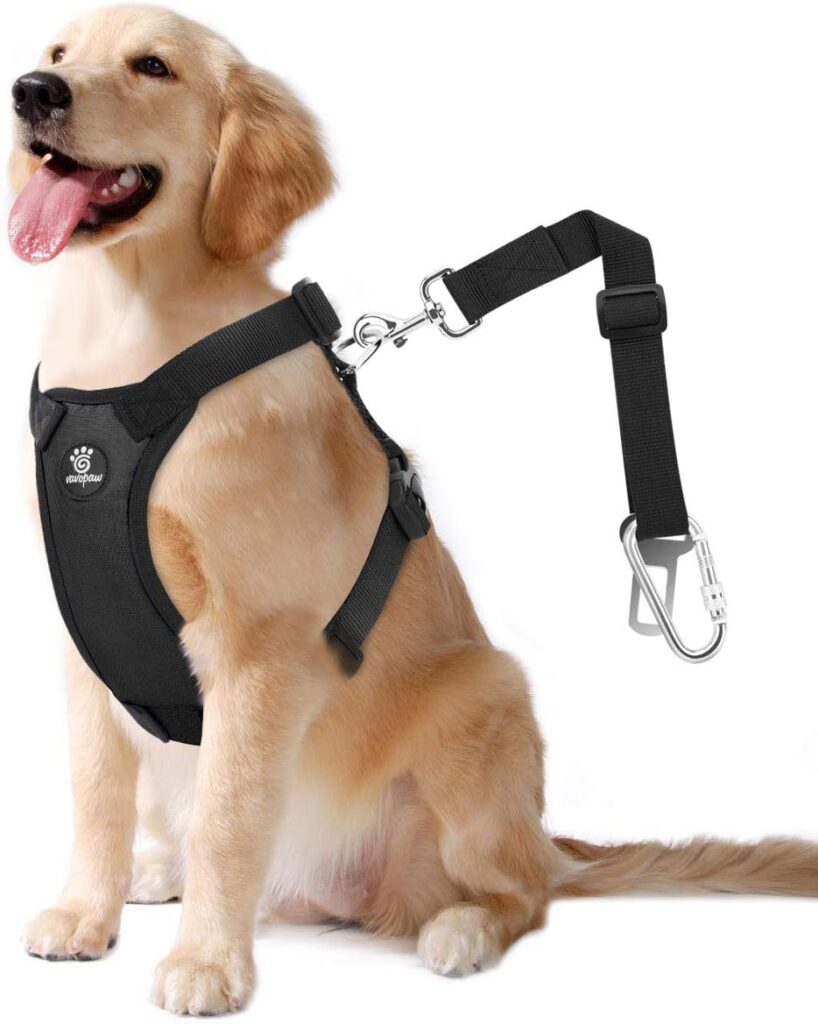
A car safety harness is designed to keep your dog secure while traveling in a vehicle. These harnesses are crash-tested and can double as walking harnesses.
How to Put It On (see video):
- Slide the harness over your dog’s head.
- Adjust the straps around the chest and torso.
- Buckle the harness and attach the seatbelt tether.
- Attach the leash to the D-ring for walking.
Pros:
- Enhances safety during car rides
- Often multifunctional
Cons:
- Can be bulkier than regular harnesses
Tactical Harness
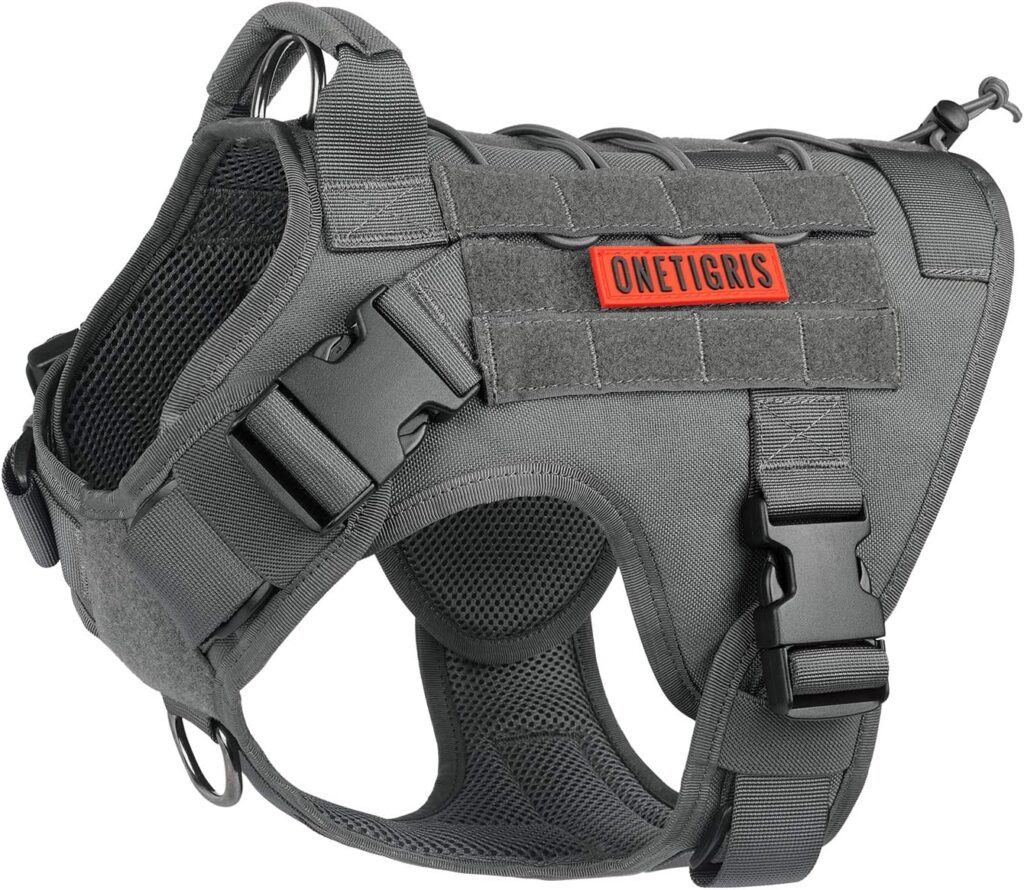
Tactical harnesses are designed for working dogs or dogs involved in outdoor activities like hiking. They are usually made from durable materials and come with handles and MOLLE (Modular Lightweight Load-carrying Equipment) systems for attaching gear.
How to Put It On (see video):
- Slide the harness over your dog’s head.
- Place each front paw into the designated leg holes.
- Secure the buckles on the sides or back.
- Adjust the straps for a secure fit and attach the leash to the D-ring.
Pros:
- Durable and robust
- Great for outdoor activities
Cons:
- Can be heavy
- Overkill for casual walks
Head Halter
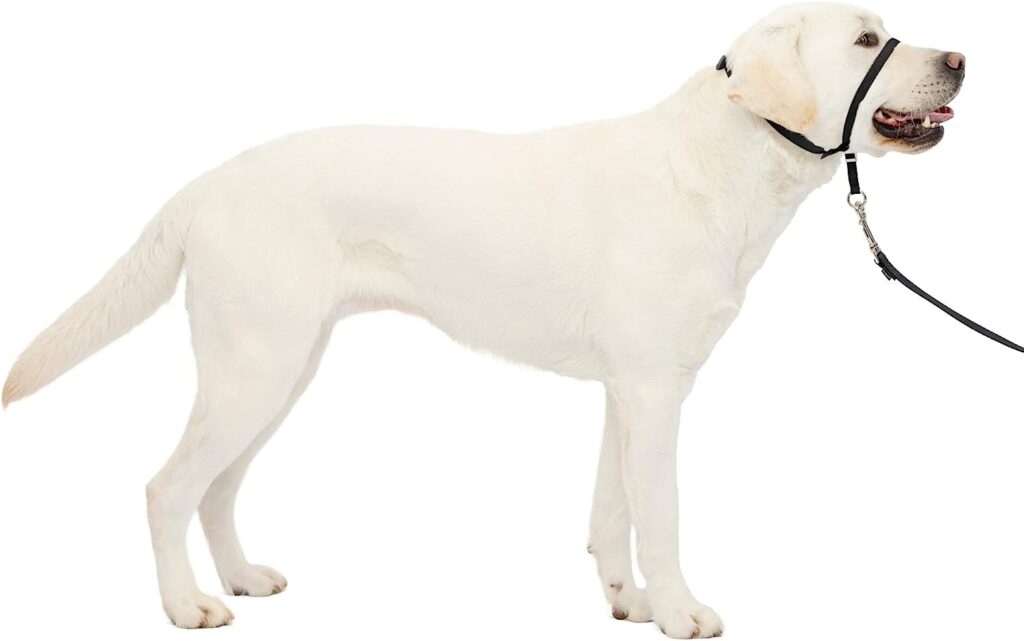
Although not a harness, a head halter fits around the dog’s muzzle and neck, giving the owner control over the dog’s head. This can be very effective for strong pullers.
How to Put It On (see video):
- Place the halter over your dog’s nose.
- Buckle the strap behind the ears.
- Adjust the straps to ensure a snug but comfortable fit.
- Attach the leash to the ring under the dog’s chin.
Pros:
- Provides excellent control
- Reduces pulling
Cons:
- Takes time for dogs to get used to
- Can cause discomfort if not used correctly
Escape-Proof Harness
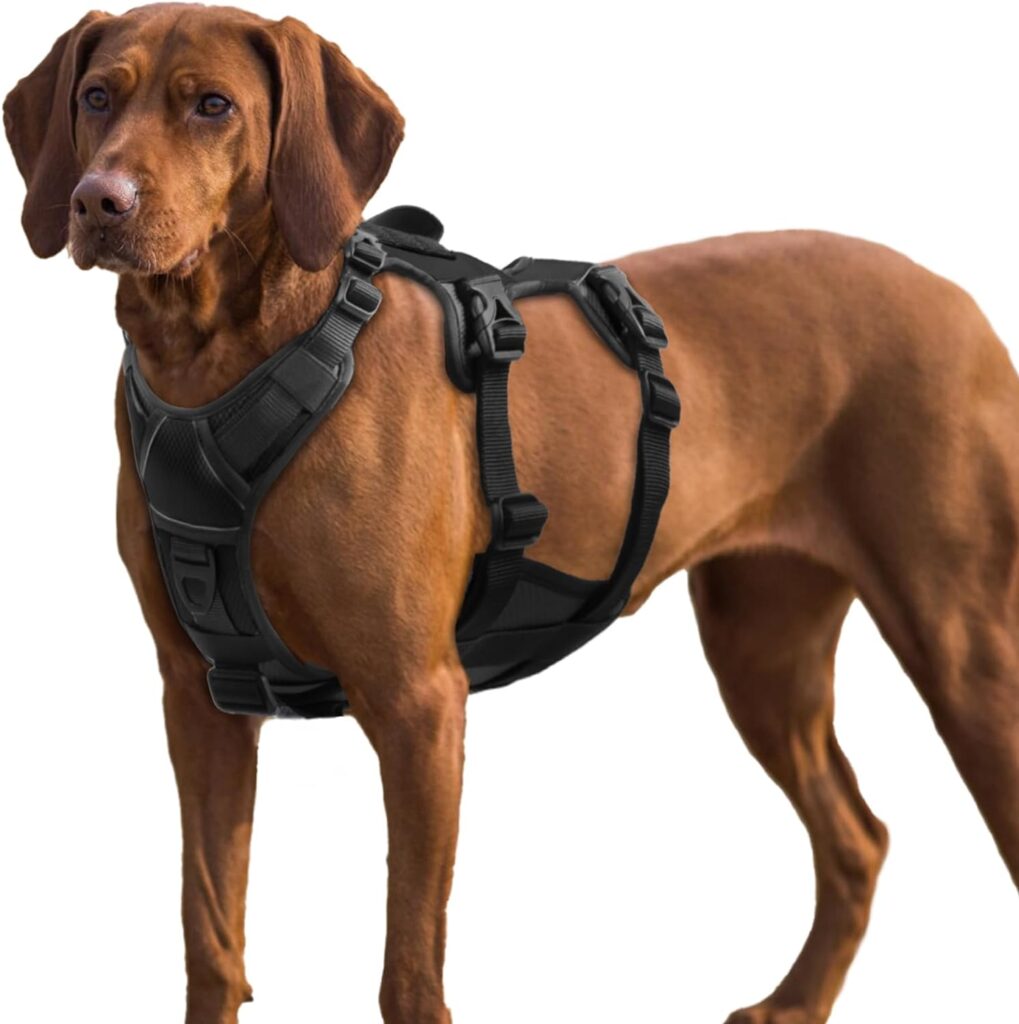
Escape-proof harnesses are designed for dogs who are experts at slipping out of regular harnesses. These harnesses typically have additional straps and points of adjustment to ensure a secure fit.
How to Put It On (see video):
- Slide the harness over your dog’s head.
- Adjust multiple straps around the chest, torso, and neck.
- Buckle the harness securely.
- Ensure all straps are snug and attach the leash to the D-ring.
Pros:
- Prevents escape
- Highly adjustable
Cons:
- Can be complicated to put on
Choosing the Right Harness for Your Dog
With all the various types of dog harnesses out there, finding the perfect one for your dog can be overwhelming. Whether you opt for a back-clip, front-clip, dual-clip, gentle leader/head halter, or another, remember to prioritize your dog’s comfort and safety above all.
Here are some other important factors to consider when choosing the perfect dog harness:
- Size and Breed: Ensure the harness is appropriate for your dog’s size and body shape.
- Behavior and Training Needs: Identify your dog’s specific leash behavior and choose a harness that addresses those needs.
- Comfort and Fit: A properly fitting harness should be snug but not restrictive, allowing your dog to move comfortably.
- Material and Durability: Opt for a high-quality harness that can withstand your dog’s activities and last for a long time.
How to Properly Fit a Dog Harness
Once you select the right harness, it’s important to ensure a proper fit. You’ll want to start by adjusting the straps for a snug fit, allowing enough room to fit two fingers between the harness and your dog’s body. This balance prevents discomfort and makes training more effective. Signs of a poor fit include fur loss or chafing, the ability to wriggle free, resistance to walking, and the harness rotating from side to side.
You’re Ready To Go Dog Walking in Columbus!
With your dog’s harness properly fitted, you’re ready to explore the vibrant streets and dog-friendly places of Columbus, Ohio. Enjoy scenic strolls along the Scioto Mile or adventures in the Short North, knowing your pup is comfortable and secure. An effective and well-fitted harness ensures safe, enjoyable walks for both you and your dog, and makes it easier for your Hands N Paws dog walker to manage your pet. So, leash up and get ready for memorable outings in this lively city!


